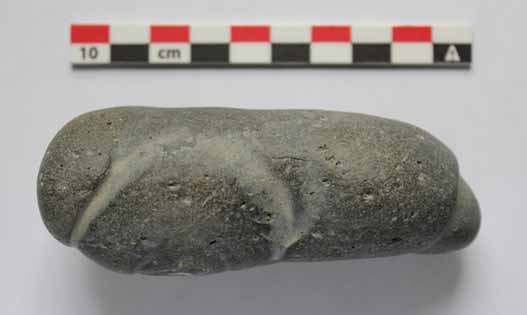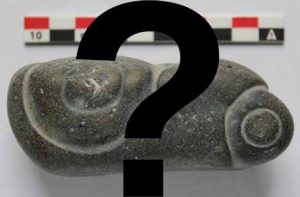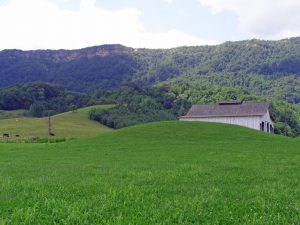Ask an Archaeologist: A Mysterious Artifact

 —DHR archaeologist Mike Clem turns the tables and asks us, “What is this object?”—
—DHR archaeologist Mike Clem turns the tables and asks us, “What is this object?”—
We have an item that has us stumped. It came from a friend on the Eastern Shore of Virginia. He found it in his usual, top secret, fishing spot on the barrier islands south of Chincoteague. He often finds other items washing up on shore there, likely the remnants of a site that long ago eroded away. He often finds spear points, arrowheads, and pottery, all dating to pre-European settlements in the area. He also finds early colonial ceramics dating to the 1600s and 1700s. Additionally, he has picked up a number of the small, yellow Dutch bricks that date to the early 1600s and that are common at an archaeological site we are investigating at Eyreville (Northampton Co.), first occupied by Europeans in the 1630s.
So, we have this item (photos below) that is unlike anything else in Virginia. I have shown it to archaeologists throughout the state and no one recognizes it as local. I contacted an expert in Ohio who specializes in Adena and Hopewell traditions there. It may seem like an odd place to start but I had my reasons. While I do not want to get into too much detail about Adena, as I am not an expert, the Adena culture (circa 800 BCE to 100 CE) coincides roughly with the Early Woodland of the eastern U.S. The Adena were known as mound builders, a few of which survive in Ohio, West Virginia, and Kentucky. They also made very finely knapped, stemmed spear points of high quality Ohio flint and a good number of these have been found on the Delmarva Peninsula. How they got to the eastern seaboard is a topic of debate among archaeological scholars. The expert in Ohio determined our item was neither Adena nor Hopewellian and suggested I try showing it to a Mississippian expert.
Mississippian Culture was much later than Adena and dates to what we in the east call Late Woodland period, around 800 CE to the time of first European contact. The Mississippian people were also known as mound builders but they created large “platform” mounds with flat tops where they constructed buildings. The Adena mounds were/are conical and served a different purpose. The Mississippian Culture included very large urban centers (see Cahokia) and smaller outlying towns. Agriculture was vital to the system and allowed the people to flourish and create beautiful artworks and pottery.
The Mississippian Culture even made its way into Southwest Virginia. The Ely Mound in Lee County is a very late example of the culture and as far into Virginia as it appears to have extended. But the idea that the item we had could be Mississippian is reasonable after looking at their wonderful art. It is also feasible that the item could have made its way to the shore via trade networks. No such luck. The expert I contacted in Illinois said that it did not resemble any artwork of the Mississippian culture she had ever seen.
This failure led me to the idea that perhaps this artifact did not make it to the Eastern Shore before Europeans came but was brought there by Europeans. We know that the Dutch and English traders often came up the coast after making trade runs to the Caribbean and beyond. We also know that the site from which this came yields early trade goods. Is it possible that some sailor brought this lovely little carving along as a souvenir and lost or traded it? Could it have come from the Yucatan Peninsula, Cuba, or maybe Columbia? Who has an idea? Let us know.
The artifact itself is made of stone. It is a hard yet very smooth stone, not steatite (soapstone) as is common with many carved effigy items. (Read about a pre-Contact steatite bowl found in Virginia.) It is a little over 10cm (4-inches) long. Its size compares to that of a comfortable handle around which people could easily wrap their fingers. It is very slightly water worn from the surf but retains a great amount of detail. It is quite beautiful and took a good deal of effort to create.
While we at DHR are primarily focused on Virginia history, artifacts like this serve to remind us that we are all connected and that history did not happen in a vacuum. Humans connected with each other throughout history and shared their experience and culture. Whether this was brought here by a sailor in colonial times or by trade or travel before Europeans came to the Eastern Shore, we can see how culture is transient and its significance and influence can be far reaching.











